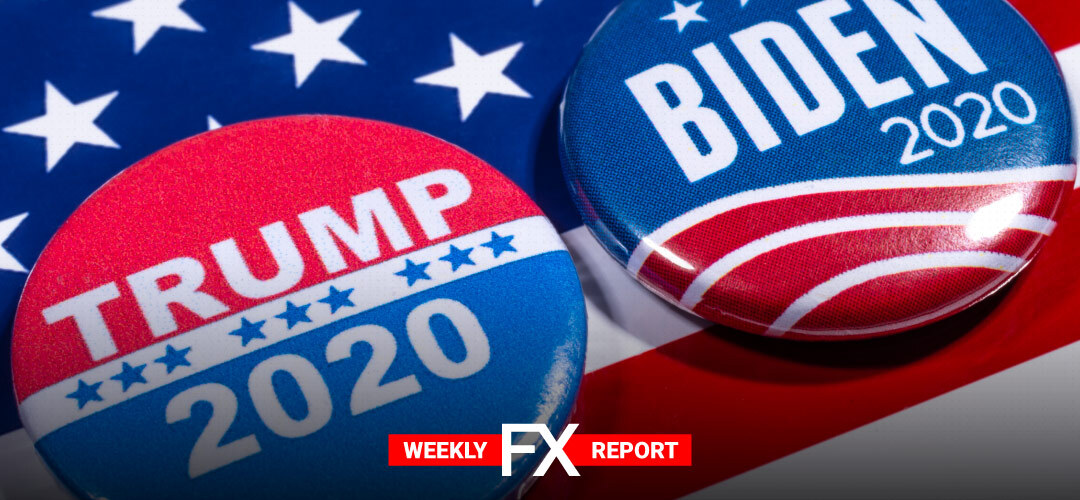The coronavirus crisis has altered the US Election 2020 vote approach, deepened already wide differences and taken the economy to another path.
Investors are getting prepared for more volatility as the election day approaches amid announcements of strict lockdowns in Europe.
Republican President Donald Trump trails Democratic challenger Joe Biden in national opinion polls. But polls in the swing states that will decide the election show a closer race.
The biggest fear for markets is for Wednesday to arrive with the election still in doubt and the vote too close or contested. Analysts are concerned that an uncertain outcome could cloud the prospects for fiscal stimulus in the world’s No. 1 economy. Also crucial for the size of a possible stimulus will be which party wins the Senate.
Further, a surprise Trump victory could stoke widespread uncertainty in the short term.
The UK was the latest country in Europe to announce a fresh lockdown, following France and Germany. Hopes the winter lockdowns wouldn’t last as long as back in spring supported markets. However, in Europe, new COVID-19 cases have doubled in five weeks, with total infections surpassing 10 million.
On the Brexit front, Britain resumed talks with the European Union over a post-Brexit trade agreement. EU chief negotiator on Friday said the EU and Britain are working hard but much remains to be done.
Brexit negotiators are set to continue talks in Brussels this week. This is a sign both sides are still pushing to avoid a damaging breakdown in trade when the transition period ends on Dec. 31.
START TRADINGUS Election, PMIs, Rate Decisions, Non-farm payrolls
Investors are prepared for short-term trading turmoil and major long-term policy shifts, on the eve of the US Election 2020. Besides the U.S. presidential election, this week is filled with economic data, including PMI data from the United States, euro zone and elsewhere, as well as U.S. non-farm payrolls and Chinese trade. Also, the BoE and RBA will announce their rate decisions.
- Traders will be watching for the Eurozone Manufacturing PMIs on Monday (02.11). German and eurozone PMIs will probably be well into expansionary territory in October. The Spanish release mayo edge up to 51.0, up from 50.8 points. The projections for the French and Italian PMI are at 51.0 and 53.9 points, respectively.
- The focus shifts towards the U.S. election on Tuesday (03.11). The markets will be keeping a close eye on the US election 2020, as voters choose between Donald Trump and Joe Biden. However, investors are prepared for the chance that it could take a few days before the result becomes clear.
- Traders will be also looking for the RBA Rate Decision on Tuesday. The RBA has pegged the Cash Rate at 0.25% since March but has sent broad hints to the markets that it plans to trim rates.
- On Thursday (05.11), investors’ eyes are on the Bank of England Rate Decision. Analysts are expecting more of the same at the BoE policy meeting.
Follow this week’s economic calendar.
LQDFXperts – All eyes on Tuesday US Election 2020
Expected swings in the major currencies climbed to their highest since April as investors wait for the outcome. Lacking a clear US election result, investors would likely flock to safe-haven assets, such as gold, the Japanese yen and U.S. dollar.
EUR/USD suffered its worst week since March, falling 1.8%. The greenback posted its largest weekly percentage gain since late September. On the week, the dollar index was up 1.4%, its best weekly performance in more than a month. The euro remained pressured overall after the ECB on Thursday flagged further monetary easing in December. Further, a surge in coronavirus cases continued to weigh on sentiment, with the euro coming under pressure in recent weeks.
GBP/USD fell 0.6% last week, as the US dollar enjoyed broad gains. The pound hit its lowest in almost four weeks on news of the national lockdown. The British currency has largely ignored the ongoing Brexit talks. The Brexit deadlock continues, with the December 31st deadline looming. We may see significant volatility from the pair, as the US holds elections and the UK lockdown roils currency markets.
USD/JPY was almost unchanged last week. The US election will take centre stage next week, and traders should be prepared for volatility on the currency markets. However, as they are both safe-haven assets, USD/JPY movement could be limited.
AUD/USD continues to show volatility, recording a sharp loss of 1.5% last week. Analysts widely expect the RBA to lower interest rates this week. The Aussie’s slide could continue if the rate statement is dovish about economic conditions.
USD/CAD climbed sharply last week, with gains of 1.4%. Canada’s dollar was facing its worst week since April. We can expect some volatility from USD/CAD next week.
PLEASE NOTE The information above is not investment advice.
Sources: Reuters, CNBC, BBC, The Guardian
